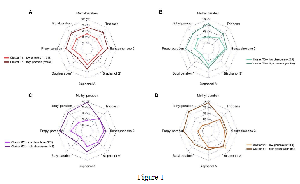
Yohhei Hamad, Daniela Maria Cirillo, Alberto Matteelli, Adam Penn-Nicholson, Molebogeng X. Rangaka, Morten Ruhwald
European Respiratory Journal 2021; DOI: 10.1183/13993003.00167-2021
Abstract
Only tuberculin skin tests (TST) and two interferon-γ release assays (IGRA) – QuantiFERON-TB Gold In-Tube and T-SPOT.TB – are currently endorsed by the World Health Organization as tests for tuberculosis (TB) infection. While IGRAs are more specific than TST, they require sophisticated laboratory infrastructure and are costly to perform. However, both types of tests have limited performance to predict development of active TB. Tests with improved predictive performance and operational characteristics are needed.
We reviewed the current landscape of tests for TB infection identified through a web-based survey targeting diagnostic manufacturers globally.
We identified 20 tests for TB infection including 15 in-vitro tests and five skin tests. Thirteen of the in-vitro tests are whole-blood IGRA and 14 uses early secreted antigenic target 6 (ESAT-6) and culture filtrate protein 10 (CFP-10), with or without additional antigens. Ten are based on assays other than an enzyme-linked immunosorbent assay such as a fluorescent lateral flow assay, which requires less manual operation and shorter assay time and hence is more suitable for decentralisation compared to the existing IGRA.
Four of the five skin tests use ESAT-6 and CFP-10 proteins while the remaining one uses a new antigen that is specific to Mycobacterium tuberculosis complex.
New tests have the potential to improve accuracy, operational characteristics and end-user access to tests for TB infection. However, published data in various populations and settings are limited for most new tests. Evaluation of these new tests in a standardised design would facilitate their endorsement and programmatic scale-up.
Footnotes
This manuscript has recently been accepted for publication in the European Respiratory Journal. It is published here in its accepted form prior to copyediting and typesetting by our production team. After these production processes are complete and the authors have approved the resulting proofs, the article will move to the latest issue of the ERJ online. Please open or download the PDF to view this article.
Conflict of interest: Dr. Hamada has nothing to disclose.
Conflict of interest: Dr. Cirillo has nothing to disclose.
Conflict of interest: Dr. Matteelli has nothing to disclose.
Conflict of interest: Dr. Penn-Nicholson reports grants and non-financial support from Multiple partners, outside the submitted work; In addition, Dr. Penn-Nicholson has a patent US20190249228A1: Biomarkers for prospective determination of risk for development of active tuberculosis pending.
Conflict of interest: Dr. Rangaka has nothing to disclose.
Conflict of interest: Dr. Ruhwald reports In addition, Dr. Ruhwald has a patent WO2008028489 licensed, a patent WO2012076020 issued, a patent WO2011137902 issued, a patent WO2012139591 licensed, and a patent WO2017084671 licensed. All IPR have been assigned to Copenhagen University Hospitals and Statens Serum Institut, Denmark.
- Received January 18, 2021.
- Accepted April 5, 2021.
- Copyright ©The authors 2021. For reproduction rights and permissions contact permissions@ersnet.org














